#stellar evolution
Text
Simeis 147

Sometimes known as the Spaghetti Nebula, Simeis 147 is the remnant of a supernova that occurred 40,000 years ago. The glowing filaments of this composite image show hydrogen and oxygen in red and blue, respectively. (Image credit: S. Vetter; via APOD)
Read the full article
#astrophysics#fluid dynamics#instability#physics#science#shockwave#stellar evolution#supernova#turbulence
133 notes
·
View notes
Text
Stellar Evolution: An In-Depth Journey into the Lifecycle of Stars
Stellar evolution tells the fascinating story of how stars are born, change, and eventually die. It's a process that takes billions of years and has a big impact on the universe and even life itself. In this article, we'll explore the journey stars take throughout their lives, looking at the different stages they go through and what causes them. Let's dive into the details of stellar evolution and understand how these celestial objects live and evolve.
Formation of Stars: Birth from Cosmic Clouds
Stars begin their journey in huge clouds of gas and dust called nebulae. These clouds are like giant factories that have all the ingredients needed to make a star. When something like a shockwave or a disturbance happens, parts of the nebula start to get denser. This denser area is where a new star begins to form. It starts as what we call a protostar. As more and more material gets pulled in by gravity, the protostar grows bigger and denser. Eventually, it becomes so dense and hot that nuclear fusion starts happening in its core. This is when the star "turns on" and starts shining.
The Main Sequence Phase: A Star's Brightest Period
When a star begins nuclear fusion, it enters its main phase, which is its brightest time. In this phase, hydrogen atoms in the star's center combine to form helium, releasing a lot of energy. This energy pushes outward, balancing the star's gravity and, keeping it stable. How long this phase lasts depends on how big the star is. Bigger stars go through this phase faster than smaller ones.
Stellar Metamorphosis: Beyond the Main Sequence
Once a star runs out of its hydrogen fuel in the center, it starts changing and moves away from its main form. What happens next depends on how big the star is to begin with. Different-sized stars go through different changes, each with its own special things happening.
Red Giant Phase: The Stellar Expansion
When stars like our Sun start running out of hydrogen, they enter a phase called the red giant phase. At this point, the star gets bigger and expands outward, but its core gets smaller and hotter. This makes the outer layers of the star glow red. Inside the star, helium starts fusing together, creating even more energy. This red giant phase shows that the star is getting closer to the end of its life.
Planetary Nebulae and White Dwarfs
When a star becomes a red giant, it swells up and eventually sheds its outer layers into space. This creates a beautiful cloud called a planetary nebula. What's left behind is the core of the star, which becomes a white dwarf. A white dwarf is a small, dense object about the size of Earth. It's made mostly of a special kind of matter called electron-degenerate matter. Over a very long time, white dwarfs cool down and become less and less bright. Eventually, they become invisible and mark the end of the star's life for smaller stars.
Supernovae and Neutron Stars: The Fate of Massive Stars
When big stars run out of fuel, they collapse suddenly, causing a massive explosion called a supernova. This explosion is so bright that it can outshine entire galaxies. During this explosion, heavy elements made inside the star's core are scattered into space, which later helps in forming new stars.
After a supernova, the core of the big star can shrink even more, forming a neutron star. Neutron stars are very small, like cities, and are made mostly of tightly packed neutrons. They have strong magnetic fields and spin very fast, leading to interesting things like pulsars and magnetars.
Black Holes: The Mysterious End
When really big stars run out of fuel, something incredible happens. They collapse under their own gravity, squeezing down into a tiny, super-dense point. This creates something called a black hole. Black holes are mighty, with gravity so strong that not even light can escape from them. They're like cosmic vacuum cleaners, sucking in everything around them. Black holes are mysterious and fascinating, and they impact how galaxies work, shaping the universe in a really big way.
Conclusion
Stellar evolution is like a never-ending story of how stars are born and eventually fade away. It starts with the peaceful formation of baby stars in cloudy areas of space called stellar nurseries. Then, stars grow and shine brightly during their main life phase. But as they run out of fuel, some stars become red giants, swelling in size. Eventually, smaller stars become white dwarfs, while bigger ones explode into supernovae, scattering elements into space. This process helps shape the universe, showing us how everything in space is connected. By studying stars, we learn more about where we come from and our role in the vast cosmos.
FAQs
Who came up with stellar evolution?
In the early 1900s, two astronomers named Ejnar Hertzsprung and Henry Norris Russell found a helpful way to compare different stars. They called it the Hertzsprung-Russell (H-R) Diagram. It's like a big chart where scientists can see how stars compare to each other based on their brightness and temperature. This diagram has been super useful in understanding more about stars and how they work.
What are the elements of stellar evolution?
These are some of the building blocks found in space i.e. hydrogen, carbon, nitrogen, oxygen, phosphorus, sulfur, chlorine, sodium, magnesium, potassium, calcium, and iron.
What is the lifetime of a star?
Very big stars burn through their fuel fast, so they don't live very long, maybe just a few hundred thousand years. But smaller stars use their fuel more slowly, so they can shine for billions of years. However, no matter how big or small a star is, eventually, it starts running out of hydrogen, which is what keeps it shining.
What is the stellar life cycle?
Stars go through a cycle of being born, burning fuel, and spreading out material when they die. This cycle is ongoing and helps create elements that fill the universe. Depending on how much stuff a star has (its mass), it follows a different path in its life.
What are the 7 types of stars?
Stars come in different types, and scientists classify them based on how hot they are. There are seven groups, starting with the hottest and ending with the coolest. They are named O, B, A, F, G, K, and M stars. O stars are the hottest and brightest, while M stars are the coolest and dimmest.
Read more
#science#astronomy#space#education#universe#physics#sol#sunspot#sunspot number#nebula#astrophotography#black holes#stars#stellar evolution#supernova#outer space#sky#night sky#cosmology
21 notes
·
View notes
Link
Astronomers may have for the first time witnessed a sun-like star devouring a planet, shedding light on the fate that will befall Earth in about four billion years when our dying sun swells to engulf our world, a new study finds.
By analyzing countless stars during various stages of their evolution, astronomers have discovered that as our sun and stars like it near the ends of their lives, they begin to exhaust their primary source of fuel, the hydrogen near their cores. This leads their cores to contract and their outer shells to expand and cool. During this "red giant" phase, these stars may billow out anywhere from 100 to 1,000 times their original diameter, swallowing closely orbiting planets.
"We know that this must happen to all planets that are orbiting at distances smaller than that of the Earth, but it was considered extremely challenging to provide experimental evidence for this," study lead author Kishalay De, an astrophysicist at the Massachusetts Institute of Technology, told Space.com.
Continue Reading
124 notes
·
View notes
Photo

Never-before-seen way to annihilate a star Most stars in the Universe die in predictable ways, depending on their mass. Relatively low-mass stars like our Sun slough off their outer layers in old age and eventually fade to become white dwarf stars. More massive stars burn brighter and die sooner in cataclysmic supernova explosions, creating ultradense objects like neutron stars and black holes. If two such stellar remnants form a binary system, they also can eventually collide. New research, however, points to a long-hypothesized, but never-before-seen, fourth option. While searching for the origins of a long-duration gamma-ray burst (GRB), astronomers using the Gemini South telescope in Chile, part of the International Gemini Observatory operated by NSF’s NOIRLab, and other telescopes [1], have uncovered evidence of a demolition-derby-like collision of stars or stellar remnants in the chaotic and densely packed region near an ancient galaxy’s supermassive black hole. “These new results show that stars can meet their demise in some of the densest regions of the Universe where they can be driven to collide,” said Andrew Levan, an astronomer with Radboud University in The Netherlands and lead author of a paper appearing in the journal Nature Astronomy. “This is exciting for understanding how stars die and for answering other questions, such as what unexpected sources might create gravitational waves that we could detect on Earth.” Ancient galaxies are long past their star-forming prime and would have few, if any, remaining giant stars, the principal source of long GRBs. Their cores, however, are teeming with stars and a menagerie of ultra-dense stellar remnants, such as white dwarf stars, neutron stars, and black holes. Astronomers have long suspected that in the turbulent beehive of activity surrounding a supermassive black hole, it would only be a matter of time until two stellar objects collide to produce a GRB. Evidence for that type of merger, however, has been elusive. The first hints that such an event had occurred were seen on 19 October 2019 when NASA’s Neil Gehrels Swift Observatory detected a bright flash of gamma rays that lasted for a little more than one minute. Any GRB lasting more than two seconds is considered “long.” Such bursts typically come from the supernova death of stars at least 10 times the mass of our Sun — but not always. The researchers then used Gemini South to make long-term observations of the GRB’s fading afterglow to learn more about its origins. The observations allowed the astronomers to pinpoint the location of the GRB to a region less than 100 light-years from the nucleus of an ancient galaxy, which placed it very near the galaxy’s supermassive black hole. The researchers also found no evidence of a corresponding supernova, which would leave its imprint on the light studied by Gemini South. “Our follow-up observation told us that rather than being a massive star collapsing, the burst was most likely caused by the merger of two compact objects,” said Levan. “By pinpointing its location to the center of a previously identified ancient galaxy, we had the first tantalizing evidence of a new pathway for stars to meet their demise.” In normal galactic environments, the production of long GRBs from colliding stellar remnants such as neutron stars and black holes is thought to be vanishingly rare. The cores of ancient galaxies, however, are anything but normal and there may be a million or more stars crammed into a region just a few light-years across. Such extreme population density may be great enough that occasional stellar collisions can occur, especially under the titanic gravitational influence of a supermassive black hole, which would perturb the motions of stars and send them careening in random directions. Eventually, these wayward stars would intersect and merge, triggering a titanic explosion that could be observed from vast cosmic distances. It is possible that such events occur routinely in similarly crowded regions across the Universe but have gone unnoticed until this point. A possible reason for their obscurity is that galactic centers are brimming with dust and gas, which could obscure both the initial flash of the GRB and the resulting afterglow. This particular GRB, identified as GRB 191019A, may be a rare exception, allowing astronomers to detect the burst and study its after effects. The researchers would like to discover more of these events. Their hope is to match a GRB detection with a corresponding gravitational-wave detection, which would reveal more about their true nature and confirm their origins, even in the murkiest of environments. The Vera C. Rubin Observatory, when it comes online in 2025, will be invaluable in this kind of research. “Studying gamma-ray bursts like these is a great example of how the field is really advanced by many facilities working together, from the detection of the GRB, to the discoveries of afterglows and distances with telescopes like Gemini, through to detailed dissection of events with observations across the electromagnetic spectrum,” said Levan. “These observations add to Gemini’s rich heritage developing our understanding of stellar evolution,” says Martin Still, NSF’s program director for the International Gemini Observatory. “The time sensitive observations are a testament to Gemini’s nimble operations and sensitivity to distant, dynamic events across the Universe.” IMAGE....Astronomers studying a powerful gamma-ray burst (GRB) with the International Gemini Observatory, operated by NSF’s NOIRLab, may have observed a never-before-seen way to destroy a star. Unlike most GRBs, which are caused by exploding massive stars or the chance mergers of neutron stars, astronomers have concluded that this GRB came instead from the collision of stars or stellar remnants in the jam-packed environment surrounding a supermassive black hole at the core of an ancient galaxy. CREDIT International Gemini Observatory/NOIRLab/NSF/AURA/M. Garlick/M. Zamani
59 notes
·
View notes
Text
Astronomy 101: Stellar Life Cycles
This is the first in a series of posts I plan to make explaining basic astronomy concepts. I am not a professional astronomer, but I have a B.S. in Astronomy and Astrophysics, experience performing professional astronomical research (primarily photometry), and a lifelong amateur interest in astronomy. I am committed to accuracy in these posts (though some simplification is necessary) and welcome questions/comments.

(Image source)
Nearly every aspect of a star’s evolution is governed by a single characteristic: the star’s mass. Stellar masses are enormous, and so astronomers find it more convenient to measure them in solar masses (M☉, M being mass, and ☉ being the astronomical symbol for the sun, pronounced “M-sol”). 1 M☉ is equivalent to the sun’s mass; 2 M☉ is twice the sun’s mass; 0.5 M☉ is half the sun’s mass; and so on. Our sun masses approximately two quintillion kilograms—that’s 30 zeroes!—so it’s easy to see why this convention makes comparisons between stars easier.
Stars are composed primarily of hydrogen, with non-trivial amounts of helium (ex. our sun is about 74% hydrogen and 25% helium). They fuse the elements within themselves to produce an outward pressure from radiation that balances the inward pressure imposed by their own gravity (gravity wants to collapse the star; radiation keeps this from happening). The lowest stellar mass that can sustain a fusion reaction is theorized to be 0.08 M☉. It’s not physically possible for a star to be smaller than this. On the other end, the most massive stars range up to 250 M☉. (It should be noted that as the universe ages, stars are getting smaller; it is hypothesized that new stars cannot exceed 150 M☉.)
Stars are born from the gravitational collapse of giant molecular clouds (GMC), which are large, cold, and relatively dense pockets of interstellar gas. It’s theorized that several mechanisms can trigger GMC collapse, including the shock wave from nearby supernovae, collisions with other clouds, or passing through the spiral arm of a galaxy (which is denser than other areas). These all disrupt the balance within the cloud. As it collapses, it begins to fragment, forming individual stars. One GMC will produce numerous protostars.
The protostar phase lasts a relatively short time, about 500,000 years for stars the size of the sun. During this time, the protostar continues to accrete mass from the surrounding nebula (its own pocket of the GMC). Gravitational collapse is countered by gas pressure and magnetic pressure rather than by nuclear fusion as the protostar grows. Eventually, this is not sufficient and the protostar begins to collapse and enters a new phase: it reaches sufficient density to ignite nuclear fusion in its core, and becomes a proper star.
Initial fusion in the core fuses hydrogen into helium. It may seem counter-intuitive, but the lower a star’s mass, the slower it burns through its fuel and the longer it remains in this phase of its life. Massive stars are not only much hotter than small stars, but they need to produce more energy to stave off gravitational collapse. This causes them to burn through their supply of hydrogen very quickly. Very low mass stars born early in our universe have not existed long enough to burn through their hydrogen supplies. Models predict stars of 0.1 M☉ will take 6-12 TRILLION years to exhaust their hydrogen, and our universe is only 13.8 billion years old. These stars are barely getting started. These stars, known as red dwarfs, will never become red giants. Instead, they will continuously mix their original hydrogen stores with their newly produced helium until the entire star is composed of helium, at which point fusion will shut down. As they reach the end, they are predicted to become blue dwarfs, and then eventually white dwarfs. No blue dwarfs presently exist because the universe is still young.
Stars more like our sun, ranging from 0.6 to 8 M☉, have lives more consistent with what many people are taught in high school science classes. When these stars exhaust the hydrogen in their core, they still contain a large volume of hydrogen in their outer layers. They enter the subgiant phase, where they fuse hydrogen in a shell surrounding the helium core, and the star begins to expand and cool. This new helium adds to the volume of the core, the hydrogen-fusing shell moves outwards. This phase lasts several million to two billion years, again with lower-mass stars spending longer in this phase.
(You may have read that the sun will get hotter as it ages. This is true, and it’s due to the fact that as the fraction of hydrogen in the core decreases, the core temperature and rate of fusion increase. The sun will contract and become hotter as it approaches the subgiant phase. It’s theorized that this will make the Earth uninhabitable in about one billion years. However, the effects of plate tectonics and specifically the subduction of water from the oceans and the gradual slowing of tectonic activity is likely to play as large a role if not larger.)
This hydrogen-burning shell supports the star against gravitational collapse until the helium core grows too large. The core will contract, and the outer layers will further expand and cool as the star becomes a red giant. In the case of our sun, its radius will expand beyond the orbit of the Earth, in about six billion years. Shell burning continues at an increasing rate, but the star is no longer in equilibrium, and the core continues to contract even as it increases in mass, until eventually the star begins fusing helium into carbon. This can happen very suddenly for stars at the lower end of this mass range, or more gradually for more massive stars. The growth of the star can also temporarily create new habitable zones, primarily for the moons of gas giants, lasting several hundred million years.
Stars in this mass range do not have sufficient mass to fuse carbon, and so when the helium is largely consumed in the core, the core begins to collapse, and this time, only a strange state of matter called electron degeneracy will stop it. The Pauli Exclusion principle states that no two electrons can occupy identical states, and electron degeneracy occurs when a star has collapsed to the point that all the electrons of the star have been forced to occupy all the lowest-available energy states within the atomic structure of the star. The energy of the gravitational collapse is insufficient to overcome this electron pressure. White dwarfs are very small and incomprehensibly dense; similar to the mass of the sun, they are similar in size to the Earth. A teaspoon of white dwarf would weigh about 15 tons. Fusion has ceased, and the star is an inert ball of slowly cooling degenerate matter.
This is the end of the road for stars in this mass range, which is most of the stars that presently exist in the universe. Very, very slowly, solo white dwarfs will continue to cool. White dwarfs are predicted to outlast the lifespan of galaxies as structures in our universe. They may still be extant when enough time has passed for proton decay to become a significant force and ultimately devour the white dwarf. If proton decay takes significantly longer than predicted or turns out to not exist, the ultimate fate of a white dwarf is to be devoured by a black hole in the very, very, very far future of our universe when other forms of stars have all ceased to exist. (The black hole era is predicted to begin 10^43 years after the Big Bang, but it’s dependent on a lot of poorly-understood factors. Safe to say, this is not anything anyone needs to worry about.)
More massive stars have a more interesting if shorter life. They blow through their hydrogen quickly, ranging from 1 billion years to as few as 10,000 years. (You can calculate here.) As these stars enter their supergiant phase, they lose mass rapidly due to strong stellar winds. These stars do possess enough mass for more complex fusion reactions, and will gradually develop shells fusing various elements, and finally in the core, ultimately producing iron via fusion. All elements aside from hydrogen, some helium, and small amounts of lithium and beryllium are created by stellar nuclear fusion. Iron, however, is special, because it is the lightest element on the periodic table that requires more energy to fuse than it produces through fusion. A star attempting to fuse iron is going into an energy deficit, rather than producing energy through radiation that can stave off gravitational collapse. A star cannot fuse iron.
The final days of such stars come on quickly. The core turns to iron within a few hundred years, so rapidly that there is little change in the outward appearance of the star, which continues shell burning right up to the end. Eventually, this iron core reaches the effective Chandrasekhar mass, a little larger than the mass of our sun, and the core can no longer support itself. The core collapses.
It’s easy to say the star then explodes in a supernova, but the truth is more complicated. A supernova is triggered by the release of gravitational potential energy from the core collapse. If this is insufficient, instead the core becomes a neutron star or a black hole with very little fanfare. Some supernovae (pair-instability supernova) do not leave behind any stellar remnant despite originating from supermassive stars. Other supernovae do not involve supermassive stars, but white dwarfs in binary pairs accreting matter from their stellar companion.
The core collapse takes less than a quarter of a second. Within a few hours, the shockwave reaches the surface of the star, which will brighten tremendously over the next few months. At peak, supernovae can outshine their host galaxies. Perhaps the most famous supernova, SN 1987A, was visible to the naked eye and wasn’t even located in our own galaxy, but in a satellite galaxy. This shockwave is incredibly high-energy, to the point that it not only ejects outer material from the star, but ignites fusion reactions in that material. Here, we have an excess of energy, and nuclear fusion reactions that require more energy than they create are possible. This is how all elements heavier than iron are created.
The core becomes a neutron star or a black hole. Which depends on a large number of variables, perhaps strangely only two of which are core mass and stellar mass. A neutron star is similar to a white dwarf, in that it is composed of degenerate matter, but in this case electron degeneracy was not strong enough and it is held up by neutron degeneracy. In this state, electrons have combined with protons to produce neutrons, leaving behind a highly dense star composed of nuclear matter. While a neutron star is again slightly more massive than our sun, it has a diameter of only about 20 kilometers. A teaspoon of neutron star weights approximately 4 billion tons. Many neutron stars rotate rapidly, giving off jets of radiation from their poles. These stars are known as pulsars. The fate of neutron stars is similar to that of white dwarfs; they will eventually merge into black holes in the far distant future.
Other stars become black holes. In this case, even neutron degeneracy cannot stave off gravitational collapse, and the core collapses into a singularity. A singularity is a poorly-understood object where spacetime curvature becomes infinite. We can study singularities mathematically, but we can’t observe one, because it is hidden behind an event horizon—a boundary surrounding the black hole where gravity is too strong for even light to escape. And if light can’t escape, we can’t observe anything inside the event horizon. Our current understand of physics also breaks down here; our theories of gravity aren’t sufficient to fully understand singularities. We can, however, study event horizons, accretion disks (matter falling into the black hole), and jets of particles and radiation some black holes exhibit. This has given us a good understanding of the external properties and behavior of black holes, and we detect them based on these characteristics and the effects they have on other objects (ex. an orbiting companion star).
So if everything eventually becomes part of a black hole, what happens to a black hole? The answer is they evaporate through a process called Hawking radiation. Essentially, according to quantum mechanics, space has a quality called vacuum energy that causes virtual particle pairs to continuously pop in and out of existence. The pair consists of one particle and one anti-particle, which annihilate each other and return the energy of their creation to the vacuum. Therefore, no energy is created or destroyed. However, every so often, one of these pairs pops into existence with one particle on the outer side of the event horizon, able to escape, and the other trapped inside the event horizon. The virtual particle that escapes becomes a real particle, and that energy has to come from somewhere. It takes it from the black hole. Because mass and energy are functionally equivalent, this drains a tiny amount of mass from the black hole. (Please note: this is a dramatic oversimplification, but gets the basic idea across.) On long enough timelines, this will cause even the largest of black holes to evaporate. Unlike just about everything else involving stars, smaller black holes evaporate more quickly than large ones.
#astronomy#stellar evolution#tbh every stage of a star's life could be a post on its own#and for simplicity i've eliminated discussion of several things that impact stellar evolution like metallicity#it's already a long post lol#astropigeon#also this is a strange way to learn Tumblr doesn't support subscripts
71 notes
·
View notes
Text
hello astronomy tumblr!!😁
so erm. im participating in science olympiad and i have to study stellar evolution (i think star formation specifically but i assume ill have to know the other stuff as well) and exoplanets but uhh i have NOT studied SHIT all year and regionals are in a month so. if anyone is knowledgeable in this area. please i need help i am begging anything helps if you dont know anything then tag like a friend who might idfk please i am desperate🙏🙏🙏
#science#astronomy#stellar evolution#star formation#stars#space#exoplanets#planets#science olympiad#help please#spread the word gang . i am going to humiliate myself guys please
14 notes
·
View notes
Text
dailymotion
Astrology is total crap, there's no getting around that. Nobody explained why in a more effective way than astronomer Carl Sagan.
Earth's precession (a type of natural wobble) and the proper motion of the stars themselves have changed the way we Earth people view the night sky in the 3,000 or so years since astrology was concocted. In fact, there are actually 13 rather than 12 constellations the sun appears in throughout the course of the year. And the dates the sun enters and leaves those constellations of the zodiac can be weeks off from what astrologers tell you.
And just because stars appear close to each other from our perspective on Earth does not mean they are actually close to each other in reality.
Here is a diagram of the brighter stars in Gemini. The ones labeled range from Pollux (Beta Geminorum) which is an estimated 34 light years away to Mekbuta (Zeta Geminorum) which is about 1200 light years away. BTW Wasat (Delta Geminorum), which they forgot to number, is 60 light years away.
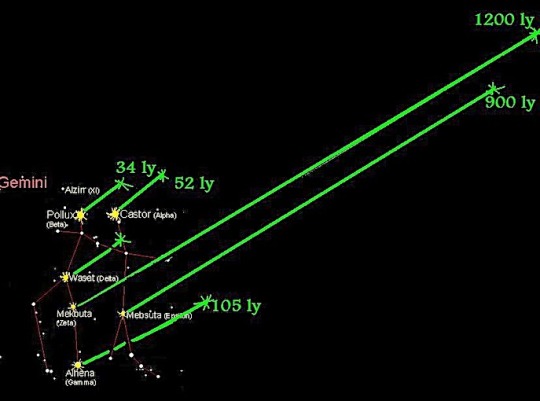
So a constellation is not some sort of special conclave of stars, it's a random collection which simply appears in the same patch of the sky as seen from Earth. The same is true of the other constellations – not just Gemini.
So your destiny has nothing to do with the changing positions of the stars and planets. Sorry! But we do all share a far more concrete connection to the universe.
All the elements except for hydrogen, helium, and (a tiny bit of) lithium were created inside of stars which blew up or ejected much of their contents billions of years ago.
I edited together a few sentences from the companion volume for the COSMOS series which the vid above comes from.
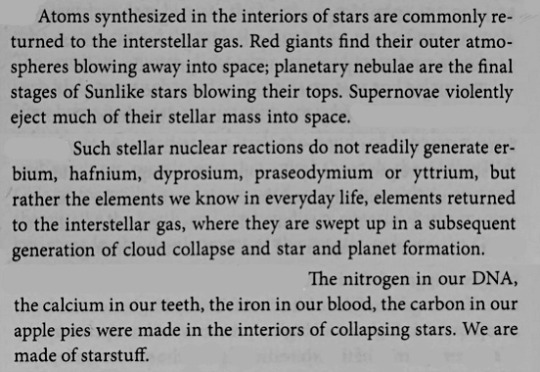
So yeah, the universe is inside all of us. That's our true connection to the cosmos.
11 notes
·
View notes
Text
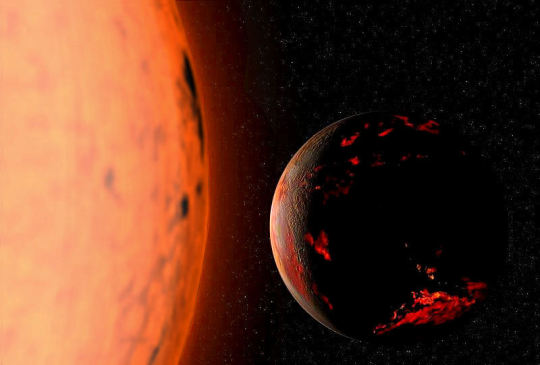
“In about one billion years, the solar luminosity will be 10% higher, causing the atmosphere to become a ‘moist greenhouse’, resulting in a runaway evaporation of the oceans. As a likely consequence, plate tectonics and the entire carbon cycle will end. Following this event, in about 2–3 billion years, the planet's magnetic dynamo may cease, causing the magnetosphere to decay and leading to an accelerated loss of volatiles from the outer atmosphere. Four billion years from now, the increase in Earth's surface temperature will cause a runaway greenhouse effect, creating conditions more extreme than present-day Venus and heating Earth's surface enough to melt it. By that point, all life on Earth will be extinct. Finally, the most probable fate of the planet is absorption by the Sun in about 7.5 billion years, after the star has entered the red giant phase and expanded beyond the planet's current orbit.”
Wikipedia contributors, "Future of Earth" (Sep 11, 2023).
#extinction#solar luminosity#stellar evolution#solar evolution#red giant phase#heliophysics#astronomy#indexmiscellany
2 notes
·
View notes
Text

Celestial Symphony: Cosmic Tapestry of Planets and Stars!
#celestial#symphony#cosmic#tapestry#planets#stars#astronomy#universe#exploration#harmony#nebulae#galaxies#orbits#interstellar#constellations#astral#stellar evolution#astrology#galactic#solar systems#interplanetary#heavenly#astronomer's delight#starlight#cosmic dance#astral melodies#celestial wonders#star clusters#nebulous#astral plane
2 notes
·
View notes
Text
1 note
·
View note
Link
37 notes
·
View notes
Text
This Space Rock's Weird Chemistry Suggests It Came From a Supernova
This Space Rock’s Weird Chemistry Suggests It Came From a Supernova
In 1996, a rock from space was found in southwestern Egypt’s Great Sand Sea. The rock was odd, even by extraterrestrial standards, and a team of researchers studying the rock’s chemistry now propose that it came from a supernova—the brilliant, explosive collapse of a star.
The rock is named Hypatia, after a 4th-century Egyptian mathematician. Based on the pattern of 15 elements in a 3-gram sample…

View On WordPress
#astronomy#Comets#Cosmic-dust#Gizmodo#Human Interest#Hypatia#Items#Jan Kramers#Meteorites#physical sciences#Planetary science#Stellar evolution#Supernova#Type Ia supernova#Type II supernova
0 notes
Text






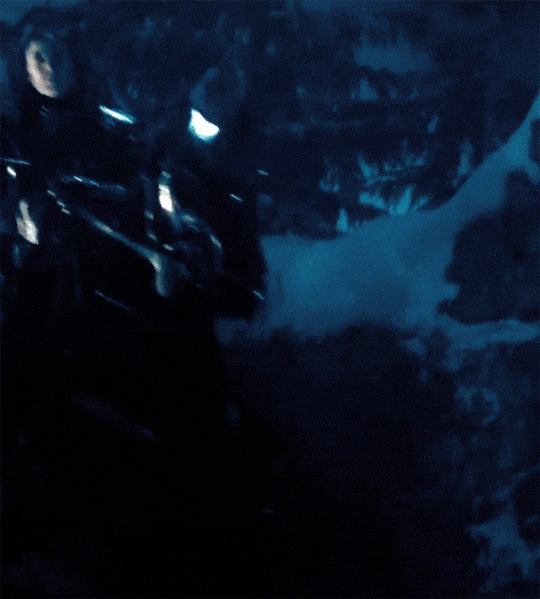



Vampire Elder Amelia -
Underworld: Evolution (2006)
#this really implies a completely different movie than what you actually get#a great precursor to rise of the lycans tho#WHICH CONVENIENTLY DOESN’T HAVE AMELIA#WhATevEr…#marcus and viktor got a lot of screen time story dialogue and action#but Amelia my Queen my Love they did You sooo dirty#i was just always waiting for Her movie where she’s a legit main player in everything#with a million sequels i don’t know why this wasn’t done no excuse#my only solace is to believe she was the one solid sane clever fierce badassbitch that was too wise & stellar to indulge everyone else drama#She is An Elder a Vampire Elder#WhATeVeR!#vampire#elder amelia#her and selene would have complained about Kraven together…about all of the dudes actually#i can almost hear the cackling#zita görög#underworld: evolution#movie edit#character edit#perioddramaedit#favorite characters#movie gif#film gif#cinema#strong female characters#women warriors#armored women#wlw#october#halloween
185 notes
·
View notes
Photo


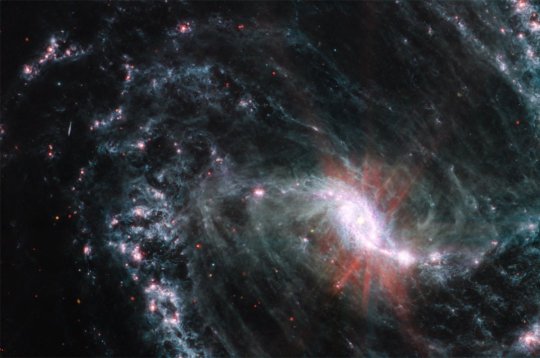
NASA’s Webb Reveals Intricate Networks of Gas, Dust in Nearby Galaxies Peering through obscuring clouds of dust, the MIRI instrument has revealed networks of giant cavities and blown-out bubbles in the gaseous arms of distant galaxies. Researchers using NASA’s James Webb Space Telescope are getting their first look at star formation, gas, and dust in nearby galaxies with unprecedented resolution at infrared wavelengths. The data has enabled an initial collection of 21 research papers which provide new insight into how some of the smallest-scale processes in our universe – the beginnings of star formation – impact the evolution of the largest objects in our cosmos: galaxies. The largest survey of nearby galaxies in Webb’s first year of science operations is being carried out by the Physics at High Angular resolution in Nearby Galaxies (PHANGS) collaboration, involving more than 100 researchers from around the globe. The Webb observations are led by Janice Lee, Gemini Observatory chief scientist at the National Science Foundation’s NOIRLab and affiliate astronomer at the University of Arizona in Tucson. The team is studying a diverse sample of 19 spiral galaxies, and in Webb’s first few months of science operations, observations of five of those targets – M74, NGC 7496, IC 5332, NGC 1365, and NGC 1433 – have taken place. The results are already astounding astronomers. “The clarity with which we are seeing the fine structure certainly caught us by surprise,” said team member David Thilker of Johns Hopkins University in Baltimore, Maryland. “We are directly seeing how the energy from the formation of young stars affects the gas around them, and it’s just remarkable,” said team member Erik Rosolowsky of the University of Alberta, Canada. The images from Webb’s Mid-Infrared Instrument (MIRI) reveal the presence of a network of highly structured features within these galaxies – glowing cavities of dust and huge cavernous bubbles of gas that line the spiral arms. In some regions of the nearby galaxies observed, this web of features appears built from both individual and overlapping shells and bubbles where young stars are releasing energy. “Areas which are completely dark in Hubble imaging light up in exquisite detail in these new infrared images, allowing us to study how the dust in the interstellar medium has absorbed the light from forming stars and emitted it back out in the infrared, illuminating an intricate network of gas and dust,” said team member Karin Sandstrom of the University of California, San Diego. The high-resolution imaging needed to study these structures has long evaded astronomers – until Webb came into the picture. “The PHANGS team has spent years observing these galaxies at optical, radio, and ultraviolent wavelengths using NASA’s Hubble Space Telescope, the Atacama Large Millimeter/Submillimeter Array, and the Very Large Telescope’s Multi Unit Spectroscopic Explorer,” added team member Adam Leroy of the Ohio State University. “But the earliest stages of a star’s life cycle have remained out of view because the process is enshrouded within gas and dust clouds.” Webb’s powerful infrared capabilities can pierce through the dust to connect the missing puzzle pieces. For example, specific wavelengths observable by MIRI (7.7 and 11.3 microns) and Webb’s Near-Infrared Camera (3.3 microns) are sensitive to emission from polycyclic aromatic hydrocarbons, which play a critical role in the formation of stars and planets. These molecules were detected by Webb in the first observations by the PHANGS program. Studying these interactions at the finest scale can help provide insights into the larger picture of how galaxies have evolved over time. “Because these observations are taken as part of what's called a treasury program, they are available to the public as they are observed and received on Earth,” said Eva Schinnerer of the Max Planck Institute for Astronomy in Heidelberg, Germany, and leader of the PHANGS collaboration. The PHANGS team will work to create and release data sets that align Webb’s data to each of the complementary data sets obtained previously from the other observatories, to help accelerate discovery by the broader astronomical community. “Thanks to the telescope’s resolution, for the first time we can conduct a complete census of star formation, and take inventories of the interstellar medium bubble structures in nearby galaxies beyond the Local Group,” Lee said. “That census will help us understand how star formation and its feedback imprint themselves on the interstellar medium, then give rise to the next generation of stars, or how it actually impedes the next generation of stars from being formed.” The research by the PHANGS team is being conducted as part of General Observer program 2107. The team’s initial findings, composed of 21 individual studies, were recently published in a special focus issue of The Astrophysical Journal Letters. More About the Mission The James Webb Space Telescope is the world’s premier space science observatory. Webb will solve mysteries in our solar system, look beyond to distant worlds around other stars, and probe the mysterious structures and origins of our universe and our place in it. Webb is an international program led by NASA with its partners, ESA (European Space Agency), and CSA (Canadian Space Agency). MIRI was developed through a 50-50 partnership between NASA and ESA. NASA’s Jet Propulsion Laboratory led the U.S. efforts for MIRI, and a multinational consortium of European astronomical institutes contributes for ESA. George Rieke with the University of Arizona is the MIRI science team lead. Gillian Wright is the MIRI European principal investigator. Laszlo Tamas with UK ATC manages the European Consortium. The MIRI cryocooler development was led and managed by JPL, in collaboration with Northrop Grumman in Redondo Beach, California, and NASA’s Goddard Space Flight Center in Greenbelt, Maryland. TOP IMAGE....The Mid-Infrared Instrument (MIRI) on NASA’s James Webb Space Telescope took this image of NGC 1433, a barred spiral galaxy with a particularly bright core surrounded by double star-forming rings. The observations reveal cavernous bubbles of gas where forming stars have released energy. Credit: NASA, ESA, CSA, and J. Lee (NOIRLab). Image processing: A. Pagan (STScI) CENTRE IMAGHE....The spiral arms of galaxy NGC 7496 are filled with cavernous bubbles and shells overlapping one another in this image from MIRI. These filaments and hollow cavities are evidence of young stars releasing energy and, in some cases, blowing out the gas and dust of the interstellar medium surrounding them. Credit: NASA, ESA, CSA, and J. Lee (NOIRLab). Image processing: A. Pagan (STScI) LOWER IMAGE....In this MIRI image of galaxy NGC 1365, clumps of dust and gas in the interstellar medium have absorbed the light from forming stars and emitted it back out as infrared light. This illuminates an intricate network of cavernous bubbles and filamentary shells. Credit: NASA, ESA, CSA, and J. Lee (NOIRLab). Image processing: A. Pagan (STScI)
91 notes
·
View notes
Text
does anyone else use their imagination to visualise what you’re reading about so completely that finishing reading feels like waking up
#was reading about stellar evolution this morning#then looked up and suddenly was confronted with the realisation#that I wasn’t in fact watching a star leave the main sequence#personal
8 notes
·
View notes
Text
stars are like my least favorite astronomical object (so sorry, controversial i know) and so i’m only just sitting here realizing that like stars, as a general topic, is so complex wtf. stellar classification all on its own is a whole thing with many different ways to categorize stars (harvard spectral classes, mk luminosity classes, HR diagram, stellar populations, etc), nevermind stellar evolution, including formation and death, and then stellar spectra and the physics behind that, and then the like actual physical anatomy of the sun and heliophysics, space weather, etc? and the nuclear physics behind fusion? what the fuck man
#ive always been more into cosmology and that mostly just deals with galaxies#i love galaxies !#i took a whole class on stars and it was when i was at rock bottom mentally so i really did not retain anything from it#but i do fucking know we never learned how to actually classify stars#like the basic spectral classes#so sitting here throughout today trying to relearn and reteach myself starting from 0 its like wait i never formally learned this anyway??#most of the class was on stellar evolution 😩😩#like idk i think stars are theoretically cool like oh big giant massive star go boom supernova wow so cool#but like theres. so fucking much physics behind all that its really quite snore actually. idk i think stars are overrated 💁#fucking pp chain vs cno cycle#UGH add nuclear physics onto this list too#meanwhile my whole class about galaxies was just like tee hee. Galaxies#brot posts#astro posting
2 notes
·
View notes